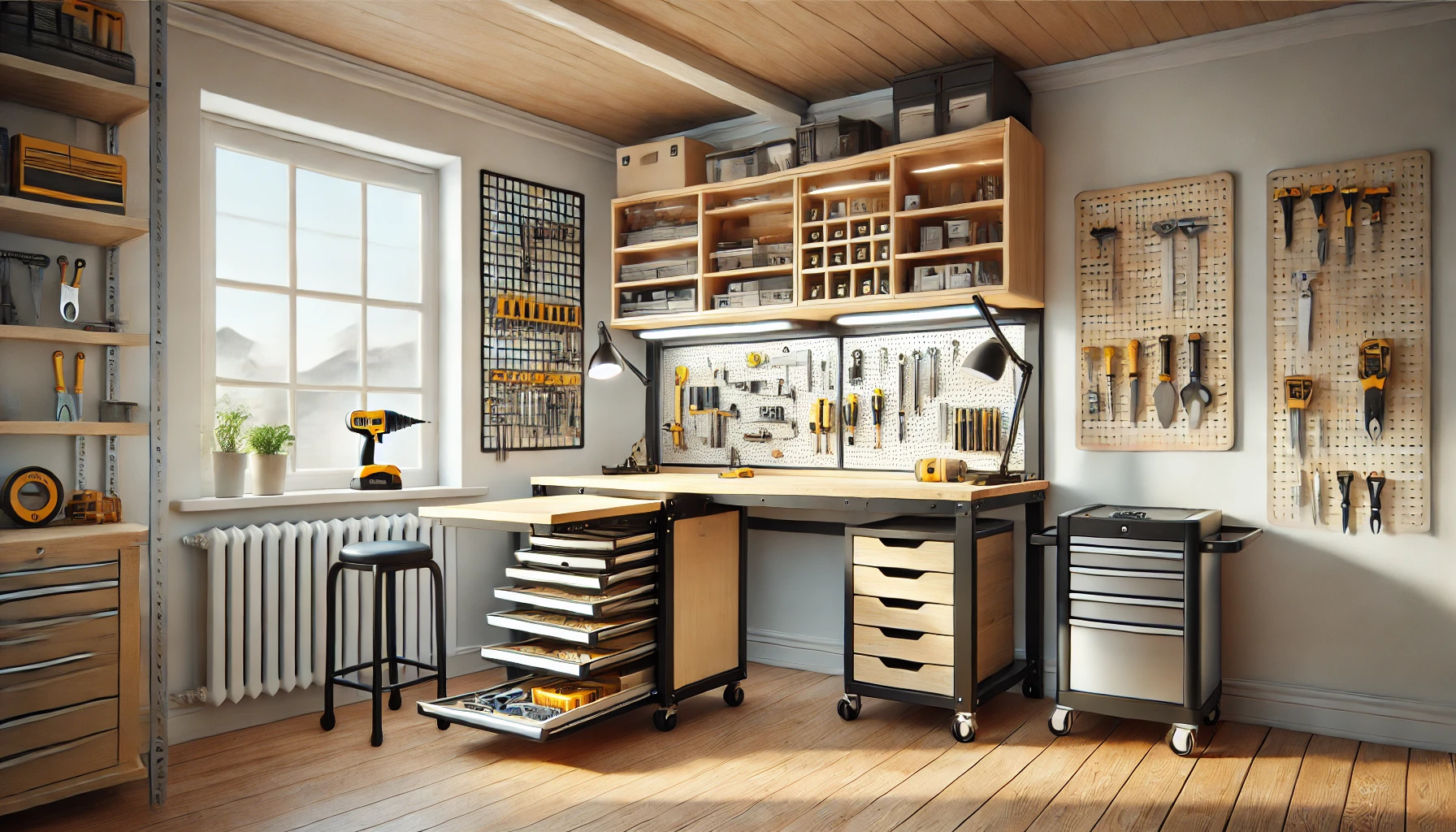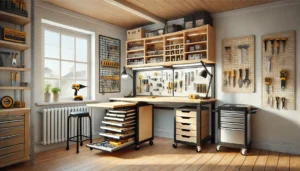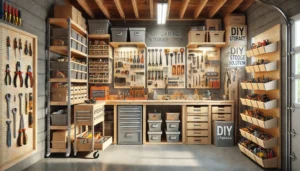
Living in a tiny apartment often means finding creative ways to make the most of every square inch. This can be especially challenging when you need to set up a workspace for remote work, studying, or hobbies. Here are some strategies to help you create an efficient and functional workspace in your small living space.
One of the first steps in maximizing your workspace is to choose the right location. Look for an area in your apartment that is quiet and free from distractions. This could be a corner of your living room, a nook in your bedroom, or even a closet that can be converted into a small office. Make sure the space you choose has enough room for a desk and chair, as well as any other equipment or supplies you need.
Once you’ve chosen your location, it’s time to select the right furniture. Opt for multi-functional and space-saving furniture that can serve multiple purposes. For example, a wall-mounted desk can be folded up when not in use, freeing up valuable floor space. A desk with built-in storage can help keep your workspace organized and clutter-free. Consider using a compact or foldable chair that can be easily stored when not in use.
Vertical storage is essential in small spaces. Utilize wall-mounted shelves, pegboards, and hooks to keep your supplies and equipment organized and within easy reach. Floating shelves can provide additional storage without taking up floor space. Pegboards can be customized with hooks, baskets, and shelves to store office supplies, tools, and other items. Use hooks to hang bags, headphones, or other accessories.
Keeping your workspace tidy and organized is crucial for maintaining productivity in a small space. Use drawer organizers, trays, and bins to keep small items like pens, paperclips, and cables neatly arranged. Label your storage containers to make it easy to find what you need. Consider using a cable management system to keep cords and cables out of the way and prevent them from becoming tangled.
Good lighting is essential for any workspace, especially in small apartments where natural light may be limited. Position your desk near a window to take advantage of natural light during the day. If this isn’t possible, invest in good-quality artificial lighting. A desk lamp with adjustable brightness can provide focused light for tasks, while an overhead light or floor lamp can illuminate the entire area. Choose LED bulbs for energy efficiency and longevity.
Personalizing your workspace can make it a more enjoyable and inspiring place to work. Add some artwork, photos, or plants to make the space feel more inviting. A small potted plant or succulent can add a touch of greenery without taking up too much space. Use a bulletin board or whiteboard to keep track of tasks, deadlines, and ideas. Personal touches can help make your workspace feel more like your own and improve your overall productivity.
In small apartments, it’s important to make use of every available space. Consider using a rolling cart or mobile workstation that can be moved around as needed. This can be especially useful if you need to work in different areas of your apartment or if you need to clear space for other activities. A rolling cart with multiple shelves can provide additional storage for office supplies, books, and other items.
Another great way to maximize your workspace is to use multi-functional furniture. A desk that doubles as a dining table, a sofa that converts into a bed, or a bookshelf that also serves as a room divider can help you make the most of your limited space. Look for furniture that can be easily moved or reconfigured to suit your needs.
If you’re short on space, consider creating a vertical workspace. This can be done by mounting a desk or work surface to the wall at standing height. This allows you to work while standing, which can be beneficial for your health, and frees up floor space for other uses. Add shelves or storage units above and below the desk to keep your supplies organized.
Using mirrors can also help make your small workspace feel larger. Place a mirror on the wall opposite a window to reflect natural light and create the illusion of more space. Mirrors can also be used to add depth and dimension to your workspace, making it feel more open and inviting.
Finally, make sure your workspace is ergonomically designed to reduce strain and discomfort. Choose a chair with good lumbar support and adjust it to the correct height for your desk. Make sure your computer screen is at eye level to prevent neck strain, and use a keyboard and mouse that are comfortable to use. An ergonomic workspace can help you stay comfortable and productive, even in a small space.
By implementing these strategies, you can create a functional and efficient workspace in your tiny apartment. With the right furniture, storage solutions, and organization, you can make the most of your limited space and create an environment that supports your work and enhances your productivity.



